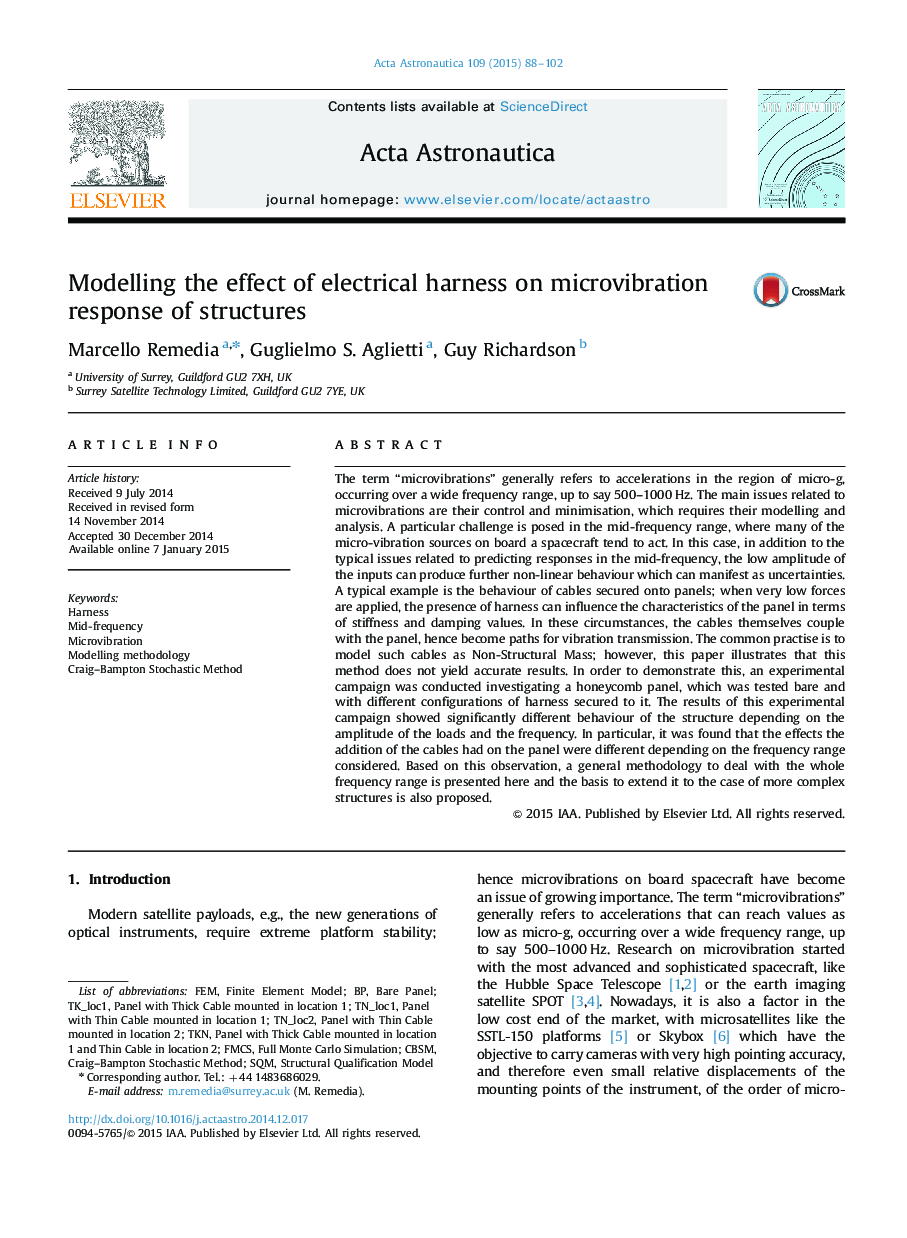| Article ID | Journal | Published Year | Pages | File Type |
|---|---|---|---|---|
| 8056670 | Acta Astronautica | 2015 | 15 Pages |
Abstract
The term “microvibrations” generally refers to accelerations in the region of micro-g, occurring over a wide frequency range, up to say 500-1000Â Hz. The main issues related to microvibrations are their control and minimisation, which requires their modelling and analysis. A particular challenge is posed in the mid-frequency range, where many of the micro-vibration sources on board a spacecraft tend to act. In this case, in addition to the typical issues related to predicting responses in the mid-frequency, the low amplitude of the inputs can produce further non-linear behaviour which can manifest as uncertainties. A typical example is the behaviour of cables secured onto panels; when very low forces are applied, the presence of harness can influence the characteristics of the panel in terms of stiffness and damping values. In these circumstances, the cables themselves couple with the panel, hence become paths for vibration transmission. The common practise is to model such cables as Non-Structural Mass; however, this paper illustrates that this method does not yield accurate results. In order to demonstrate this, an experimental campaign was conducted investigating a honeycomb panel, which was tested bare and with different configurations of harness secured to it. The results of this experimental campaign showed significantly different behaviour of the structure depending on the amplitude of the loads and the frequency. In particular, it was found that the effects the addition of the cables had on the panel were different depending on the frequency range considered. Based on this observation, a general methodology to deal with the whole frequency range is presented here and the basis to extend it to the case of more complex structures is also proposed.
Related Topics
Physical Sciences and Engineering
Engineering
Aerospace Engineering
Authors
Marcello Remedia, Guglielmo S. Aglietti, Guy Richardson,
